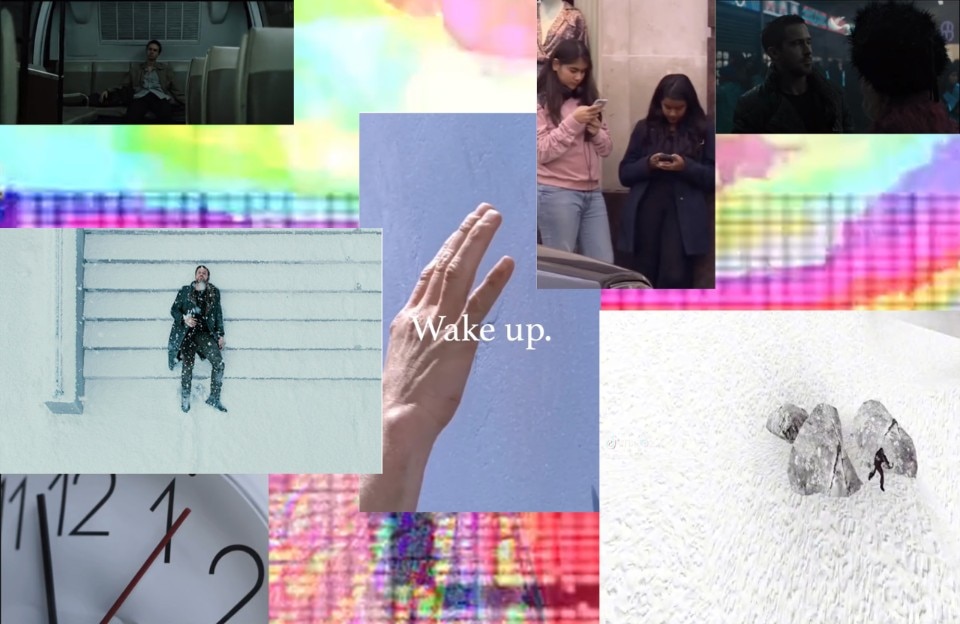On TikTok, it often goes like this. Let’s say you’re a big fan of mountain cabins, of living a rural and romanticized life surrounded by nature. Well, in that case, the hashtag you should use for videos that express this aesthetic would be #cottagecore (12.6 billion views on TikTok). On the other hand, if the aesthetic that appeals most to you is related to fairy visuals, the relevant hashtag would be #fairycore (3.3 billion views). Or maybe your favorite style matches a more cyberpunk imagery? Then you should follow the #cybercore videos.
@distortgang #distcore #corecore #pinkcore ♬ school music club fixes the car Hypedpop sytle - gnagtrotsid
For decades, the suffix “-core” has been used to indicate a radical adherence to a particular subgenre (a trend that in turn derives from hardcore music genres). TikTok applies the same concept, so every video that conveys a particular aesthetic, passion, or obsession uses this suffix, preceded by a characterizing adjective or noun.
On the Internet, however, every phenomenon is run to the ground, spoofed, and given new meaning. It is in this sense, as Know Your Meme explains, that the hashtag #corecore first appeared on Tumblr and Twitter in 2020. At the time, the term mostly intended to mock the overuse of the suffix “-core”, which began to spread aggressively from “normcore” onward.
@masonoelle send me tiktoks u think i would like #capitalism #decay #fyp #Bye2020 ♬ original sound - Ok_felicity
As it transitioned from Tumblr to TikTok, the term took a leap and changed dramatically. It began to represent an actual aesthetic. On January 1, 2021, for example, @masonoelle posted a peculiar video – a mishmash of media showing melting polar ice caps, floods, and deforestation. This montage was accompanied by sad violin music. Although not yet followed by its own hashtag, this was one of the very first videos in line with the #corecore aesthetic. The hashtag began to be used explicitly in July 2022. Its success soon grew, and by around November last year, it turned into the viral phenomenon that everyone now can’t help but talk about, with a billion views – a number that’s rapidly rising.

These short montages of dramatic videos include snippets about the climate crisis, clips from Blade Runner 2049, Griffin, or other movies, TV shows, or commercials, and are often accompanied by somber music. They are capable of evoking a sense of melancholy and nostalgia, especially when viewing of this content begins to accumulate. “Describing this aesthetic is not easy. Corecore does not have a defined identity like vaporwave or dark academia (other recently successful aesthetics on TikTok, Ed.),” Valentina Tanni, an art historian and expert on the relationship between art and technology, explains to Domus (the new edition of her MemesteticA: the Eternal September of Art has just been published).
“The corecore aesthetic, on the other hand, is intentionally much more vague; it is almost a ‘meta’ aesthetic, celebrating the concept of -core itself. Some videos are existential, others elicit more of a nostalgic and reflective feeling, always exploiting the juxtaposition of short evocative videos.”
Corecore treads a fine line between nonsense, political critique (especially through the constant reference to the climate crisis and fear for the future), and a simple collage that rushes through recognizable cultural references. Is it possible that corecore is in some way a TikTok version of Enrico Ghezzi’s iconic Blob? “In fact, it follows the same editing principle and explores its consequences,” continued Valentina Tanni. “This is especially true when you consider that the Internet culture is also the culture of remixing incongruous elements. That’s also how memes work: they take cultural elements and juxtapose them – just as avant-garde artists and experimental filmmakers did in the past”.
However, speaking with Mashable, digital subculture expert Kieran Press-Reynolds wondered how culture can keep fracturing and growing increasingly decentralized without reaching some sort of impasse. Could the emergence of a hashtag that inevitably calls for a metariflexion be a sign that the phenomenon itself is dying out? “That’s possible, not least because ‘internet aestethics’ are no longer niche but involve huge numbers of people – even YouTube is packed with aesthetic currents that have millions of views. Corecore is therefore a bit celebratory, a bit parodic. Basically, the idea of core has been emptied of its content, and all that is left is the format”.
Some see corecore as a true Internet art movement, others – like tiktoker Matt Lorence – point out that it was originally a movement with a strong political dimension (evidenced by the presence of content on the climate crisis and the violence of the armed forces), and others emphasize its element of “nostalgia for the lost future” of the younger generation. But to what extent is this trend conscious, when in many ways it seems to be mostly instinctive? “This trend is largely instinctive, but not in a naive way,” Tanni explains. “It is true that there are almost no precise cultural cues, but rather references to a specific Internet culture, to aesthetic attitudes and behaviors absorbed over twenty to thirty years of Web culture, in which we have learned to grab and manipulate content that already exists.”
From this point of view, it is hard not to notice that a mass social like TikTok has paradoxically become home to a series of increasingly specific and diverse niches; as if in some way it was breathing new life into what until recently lived mainly on smaller platforms like Tumblr or Reddit. “In my opinion, this is happening because TikTok is a platform that evolves around immediacy. But the main reason behind this is its algorithm, which leads to an extreme personalization of the user experience, giving birth to many different and separate TikToks. This is how the hashtag #nichetok was born, which highlights the presence of many niche TikToks”.
These are niches you wouldn’t stumble into consciously. Rather, you fall into them almost unintentionally, following the labyrinth of intricate paths created by the many intertwined hashtags. What’s at the end of it is the need to create a summary, an extreme synthesis of all these phenomena, while at the same time stripping them of their specific meaning. And this is perhaps the true stylistic mark of a phenomenon as elusive as corecore.


